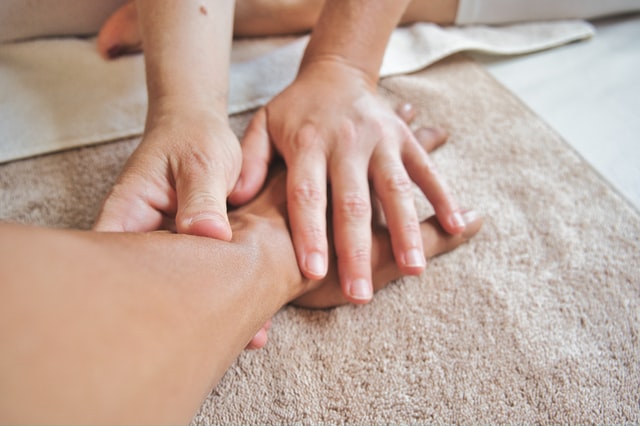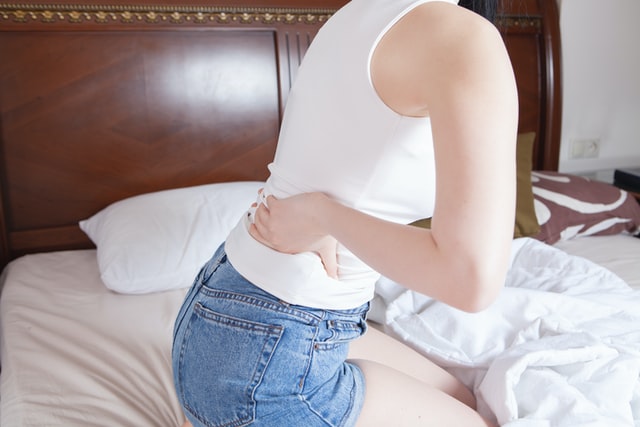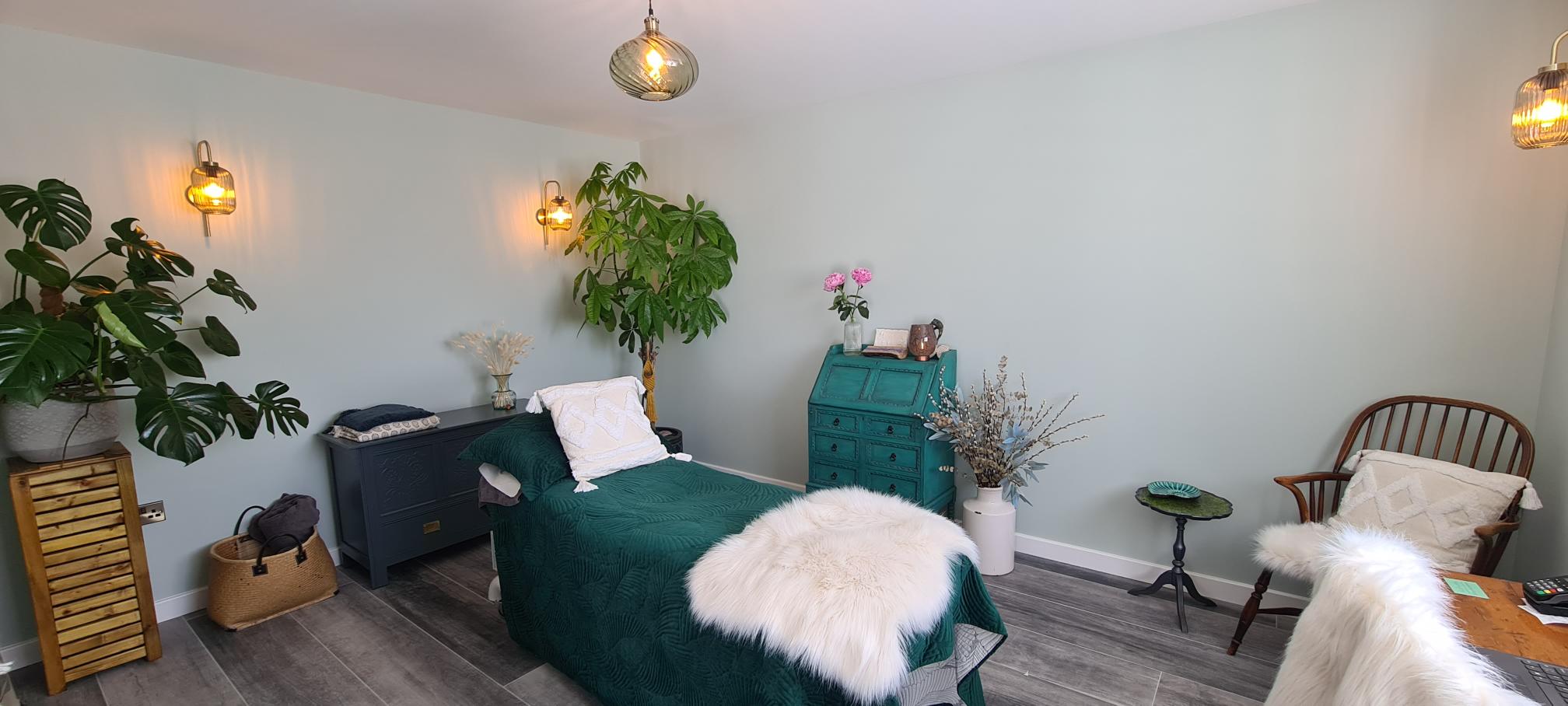What is Bowen Therapy and How Does It Work?
In partnership with Samantha Roze
We recently shared Complementary Therapist Sam Roze’s story in Listed and we were intrigued when we learned that she first encountered Bowen Therapy in the early 90’s in a healing centre in Northern Australia. We wanted to find out more about Bowen techniques and who better to ask than the Bowen Lady herself!
Sam was happy to share her knowledge with us, explaining the process and the benefits Bowen Therapy can offer. She also shared some client cases from a typical week.
Read on to see if you can relate to any of Sam's clients, or maybe you're simply in need of a 'whole body MOT'. Let's be honest, who isn't? Over to you Sam...

I often hear people say 'all I did was lift and twist' or 'I only leant forward to put a piece of paper in a tray', but on examination there is usually a pelvic rotation or a leg length difference as a result of a build up of muscle tension.'
What is Bowen Therapy?
Bowen Therapy is a gentle therapy that is applied to areas of the body using thumbs and fingers in a specific process or order. The therapy is applied through a rolling movement of the thumbs and forefingers, and is designed to stimulate nerve pathways which allow a ‘conversation’ to take place between different nervous systems of the body. The technique can be very difficult to explain and understand as it requires an understanding of how the Fascia - the thin casing of connective tissue that surrounds and holds every organ, blood vessel, bone, nerve fibre and muscle in place - works.
How Does it Work?
The connective tissue system is like a 3D tensional framework that is built around your skeleton. Your connective tissue and muscles are moist and integrated into your Fascia which can slide so that you are always in-balance. If we have repetitive habits or hold certain positions day after day, the muscles that have to hold these positions build up and get stronger. The amount of tension you put on these muscles dictates how long it will be before the muscles pull further down the line, causing the rest of your system to adjust so that you can function.

'Repetitive habits, like crossing our legs, turning our head to look at computers or sleeping in the recovery position can cause our bodies to compensate and favour one side. If these ergonomic errors continue on a daily to yearly basis the muscles start to pull or cramp and you start to feel discomfort and pain.'
Why Do You Need Bowen Therapy?
Repetitive habits, like crossing our legs, turning our head to look at the TV or computer screens or sleeping in the recovery position, can cause our bodies to compensate and favour one side. If these ergonomic errors continue on a daily to yearly basis the muscles start to pull or cramp and you start to feel discomfort and pain. If untreated, this ‘wear and tear’ can start to affect your daily life to the point of permanent pain. Sometimes other injuries can occur because of muscle weakness on one side of the body and the muscles being too tight on the opposite side.
What are the Benefits of Bowen Therapy?
Painkillers can mask pain but cannot cure it. Bowen Therapy is a safe and gentle way to release the body and return it back to a natural balanced state and free you from discomfort. Some additional benefits include an improvement in joint mobility, increased circulation of lymphatic and venous fluids, enhanced assimilation of nutrients and the elimination of toxins. Clients with sports injuries and accidents find Bowen Therapy very helpful as a remedial therapy during their recovery and it may improve rehabilitation time regardless of when the injury was sustained. Clients also report a reduction of physical, emotional and mental stress.

What can Bowen Therapy help with?
Our experience demonstrates its benefit for a myriad of conditions, including the following:
- Back and skeletal and muscular problems, from lumbar to neck
- Bladder problems, incontinence and bedwetting
- Bowel and digestive problems
- Ear problems and dizziness
- Fluid retention
- Frozen shoulder
- Headaches, such as migraine and sinus pain
- Knee and hip restrictions, misalignments
- Pelvic tilt, leg length, hip imbalance and poor mobility
- Repetitive strain and sports injuries
- Stress
What Is a Typical Therapy Session Like?
The first session starts with a brief, confidential health consultation, looking at your health and wellbeing and considering what you are looking to achieve from the session. The Bowen therapy takes place on a treatment couch in a safe, peaceful space. You remain fully clothed and, with your permission, the therapist uses light touch and manipulation to stimulate your muscles, lymphatic system and nerve pathways. Between each set of moves, the therapist allows a short break to allow the communication process to take place. These breaks increase the effectiveness of each subsequent set of moves. The move does not slide or flick over the surface of the skin, but uses the slack in the overlying skin to move over the underlying tissue, so each move covers a small area, defined by how far an individual’s skin can move over a targeted area.

What’s Does A Typical Treatment Plan Look Like?
I usually recommend two to three sessions, usually a week apart, that way I can assess and treat the whole body. Then typically there is a three week break so you can become accustomed to your new habitual habits and the body has time to adjust and heal, with a ‘maintenance programme’ if you need further treatment down the line. I find that people usually start listening to their body and can recognise when they start to compensate. Or if they have had a specific incident, like a fall or injury, and the tension starts to rebuild, they come in for a session. I call it an MOT.
Who Can Benefit From Bowen Therapy?
Bowen is a very gentle technique and it is suitable for all ages. In place of illness and discomfort Bowen introduces a state of ease and well being. Our experience demonstrates its benefit for many conditions - one way to show the versatility of the therapy is to share some client cases that I would see in a typical week:
- A personal trainer booked in for a maintenance session - MOT - so his workouts are more effective and balanced and he is in a good place physically to prevent injury
- A builder who has issues with his lower back and also has a shoulder impingement
- A new born baby with Colic
- A runner who is training for a marathon and has sciatic type pain
- A young dancer with hip issues which is affecting her performance
- A golfer looking to improve his back and his golf swing.
- A middle-aged lady with stenosis in her lower back.
- A new mother with discomfort following pregnancy, with scar tissue release following her C-Section
- A client with Parkinson’s disease
A Bit About Sam…
Samantha Roze (CNHC. FHT. ECBS. BTPA) has over 30 years experience as a qualified Complementary Therapist, offering a range of holistic therapies from her clinic on Guernsey’s west coast. She started out in the world of holistic health by studying Reflexology, Massage Therapy and Reiki, and went on to include Bowen Therapy, Scar Tissue Release Therapy and Lymphatic Drainage to her skill set. Sam is also known locally through her role as a Lecturer at the College of Further Education.
Having discovered all of this about Bowen Therapy it would be rude not to try it out, right? So we did!
Watch this space, we’ll be sharing our thoughts and experiences soon.

